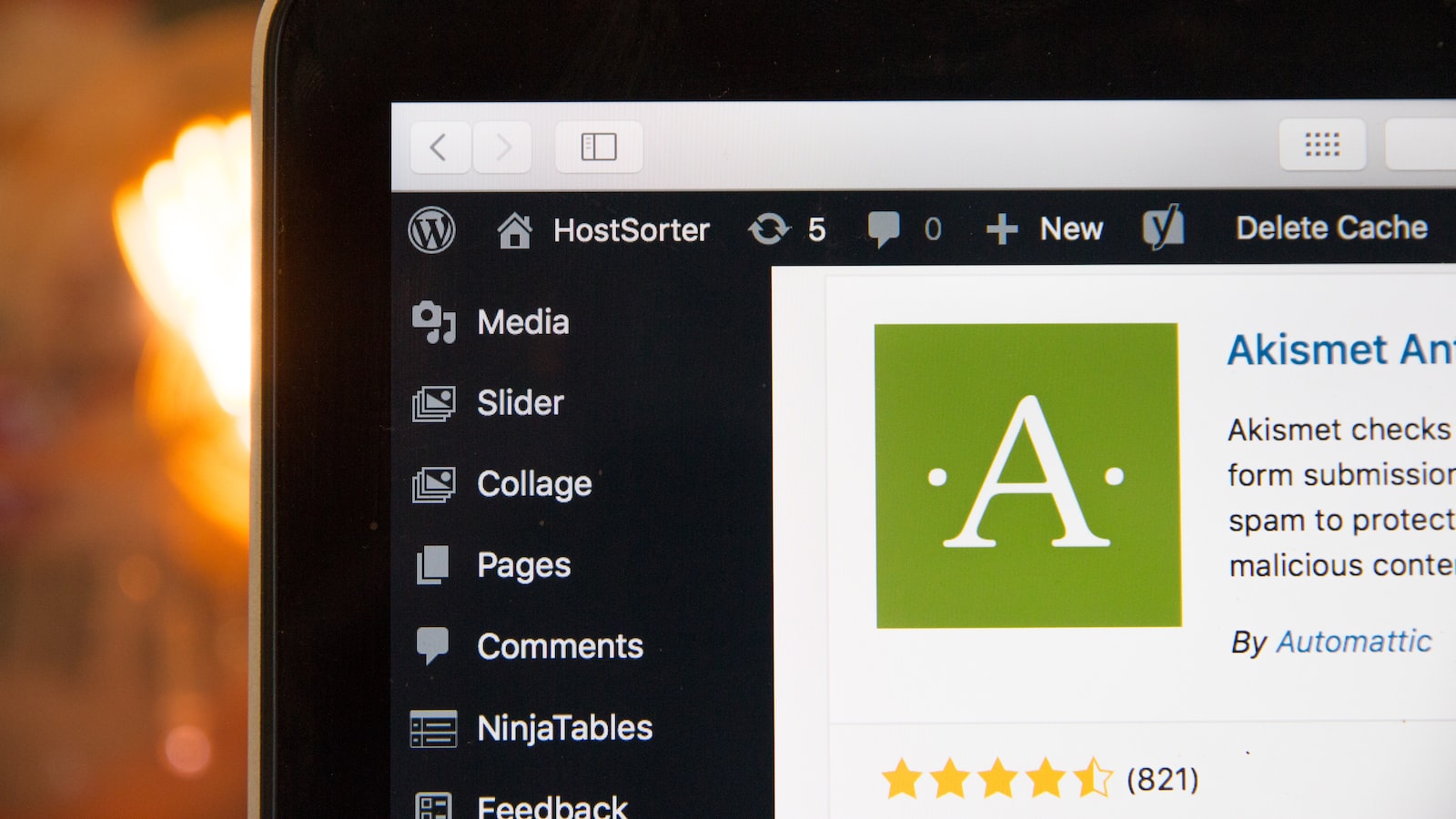Are you struggling to find content for your WordPress blog? Well, look no further! In this blog post, we will be discussing the incredible capabilities of the Crawlomatic Multipage Scraper Post Generator Plugin for WordPress (old version). This powerful plugin allows you to import content to your blog, even if the original source does not provide an API or have RSS feeds available. In the accompanying YouTube video, we will guide you through the process of installing and using this plugin, showing you how to scrape content and import it directly to your blog. So, if you’re ready to take your blog to the next level and consistently provide fresh and engaging content, let’s dive in!
– Introduction to Crawlomatic Multipage Scraper Post Generator Plugin for WordPress
In this video, we will introduce you to the versatile and powerful Crawlomatic Multipage Scraper Post Generator Plugin for WordPress. With this plugin, you now have the ability to import content to your blog, even if the source does not provide an API or RSS feeds. You can easily scrape the desired content and import it seamlessly onto your blog.
To get started, simply go to the plugins section in your WordPress dashboard and click on “Add New.” Upload the Crawlomatic plugin file and click on “Install Now.” Once activated, head over to the plugin settings where you will find a range of advanced options. Here, you can directly access the “Web Crawl to Posts” feature, which allows you to generate your first import rule.
Let’s say you want to import content from TechCrunch. Copy the URL of a post from the TechCrunch website and paste it into the designated field. This URL will serve as a starting point for the scraping process. The plugin will begin crawling the website and import the specified post along with others. You can also define a schedule for the import process, setting it to run automatically every 24 hours. Keep in mind that the maximum number of posts to import should not exceed 10.
In addition to the basic settings, the plugin offers a plethora of customization options. You can customize the page title, the page content, the post title, and the post content using available shortcodes. If your WordPress supports multiple post formats, you can select the desired format here. You also have the option to select additional post categories or remove existing categories. By enabling automatic categories, the plugin will generate relevant categories for your imported posts. To further enhance your posts, you can enable options such as commenting, trackbacks, and featured images.
The plugin even allows you to modify the imported content using regex and HTML. You can strip unwanted parts of the content, limit the word count, and even automatically translate the content to a different language using Google Translate. The possibilities are endless with the Crawlomatic Multipage Scraper Post Generator Plugin for WordPress. Take your blogging to a whole new level by effortlessly importing content from various sources onto your WordPress blog.
– Step-by-step guide on how to use the plugin for content import

The first step to using the plugin for content import is to upload and install it. Start by going to the plugins section in your WordPress dashboard and click on “Add New.” Next, choose the “Upload Plugin” option and navigate to the downloaded file. Click on “Install Now” to install the plugin. Once it is activated, you can access the plugin settings by going to the plugin section and clicking on “Settings.”
In the plugin settings, you will find some advanced options for customization. To generate your first import rule, navigate to the “Web Crawl to Posts” section. Here, you can specify the website URL and post URL from which you want to import content. This plugin allows you to scrape content from websites that do not provide an API or have RSS feeds available. You can also define a schedule for running the import rule, with options to set the frequency and maximum number of posts to import.
Furthermore, you can customize various elements of the imported posts, such as the page title, page content, post title, and post content. The plugin provides a range of shortcodes that represent specific post content, which can be replaced accordingly. Additionally, you can choose the post format, select categories (with an option for automatic category generation), enable commenting and trackbacks, and set featured images. Advanced options include the ability to manipulate or modify the content using regular expressions (regex), trim the content by word count, and even translate the content to another language using Google Translate. With the flexibility and functionality offered by this plugin, you can easily import and customize content to suit your blog’s needs.
– Advanced customization options and settings for the plugin

The plugin offers a wide range of advanced customization options and settings to cater to your specific needs. With this plugin, you have the power to import content to your blog even if the source does not provide an API or have RSS feeds available. Let’s explore some of the key features and settings.
-
Web Crawling and Post Generation:
- Generate automated imports by providing a background website URL and a post URL.
- Define a crawling schedule to import new content regularly.
- Set the maximum number of posts to be imported (up to 10 in a 24-hour period).
- Choose the post status to determine if posts should be published immediately or saved as drafts.
-
Customize Post Options:
- Tailor the page and post titles, as well as the content to match your blog’s style.
- Utilize available shortcodes to represent specific post content dynamically.
- Select the post format that suits your WordPress theme.
- Choose additional post categories, either manually or automatically generated.
- Enable commenting, backtracking, and featured images for your posts.
- Fine-tune image handling by checking metadata or specifying default featured images.
- Modify post content using regular expressions and HTML manipulation for advanced customization.
These are just a few of the many advanced customization options and settings available with the plugin. Personalize your blog’s imported content and make it uniquely yours with ease. Get creative and enhance your blog’s functionality and aesthetic appeal effortlessly.
- Recommendations for optimizing content scraping and import process

To optimize the content scraping and import process, here are some recommendations:
-
Use the “Chromatic Multi Page Scraper” plugin for WordPress: This plugin allows you to import content to your blog even if the source does not provide an API or have RSS feeds available. You can scrape the content and import it easily.
-
Configure the plugin settings: After installing and activating the plugin, go to the plugin settings. Here, you will find some advanced settings that can be customized according to your needs.
-
Web crawling: Enter the background website URL and post URL from which you want to import the content. This will be used for the scraping process.
-
Schedule and post settings: Define the schedule for running the import process. You can set it to run every 24 hours and limit the maximum number of posts to be imported. Choose the post status (published, draft, etc.).
-
Customization options: Customize the page title, page content, post title, and post content using shortcodes. You can also select the post format and assign categories to the imported posts.
-
Additional options: Enable or disable features like commenting, trackbacks, and featured images. You can also modify the content using regular expressions (regex) and strip unwanted parts of the scraped content.
-
By following these recommendations, you can optimize your content scraping and import process using the Chromatic Multi Page Scraper plugin for WordPress. It provides flexibility and customization options to import content from various sources efficiently. In conclusion, the “Crawlomatic Multipage Scraper Post Generator Plugin for WordPress (old version)” is a powerful tool that allows you to import content to your blog, even if the source does not provide an API or have RSS feeds available. With this plugin, you can scrape the content from any website and easily import it to your blog.
To use the plugin, simply upload and install it, then navigate to the plugin settings. From there, you can specify the website URL and set up a schedule for importing the content. You can also customize various aspects of the imported posts, such as the page title, content, post title, and post content.
The plugin also offers advanced options for post categories, featured images, content modification, and translation. You can select categories, remove default categories, enable commenting and back trackbacks, and even strip parts of the content using regular expressions.
With the “Crawlomatic Multipage Scraper Post Generator Plugin for WordPress (old version),” you can effortlessly populate your blog with engaging content from various sources. So why wait? Give it a try and enhance your blogging experience today!